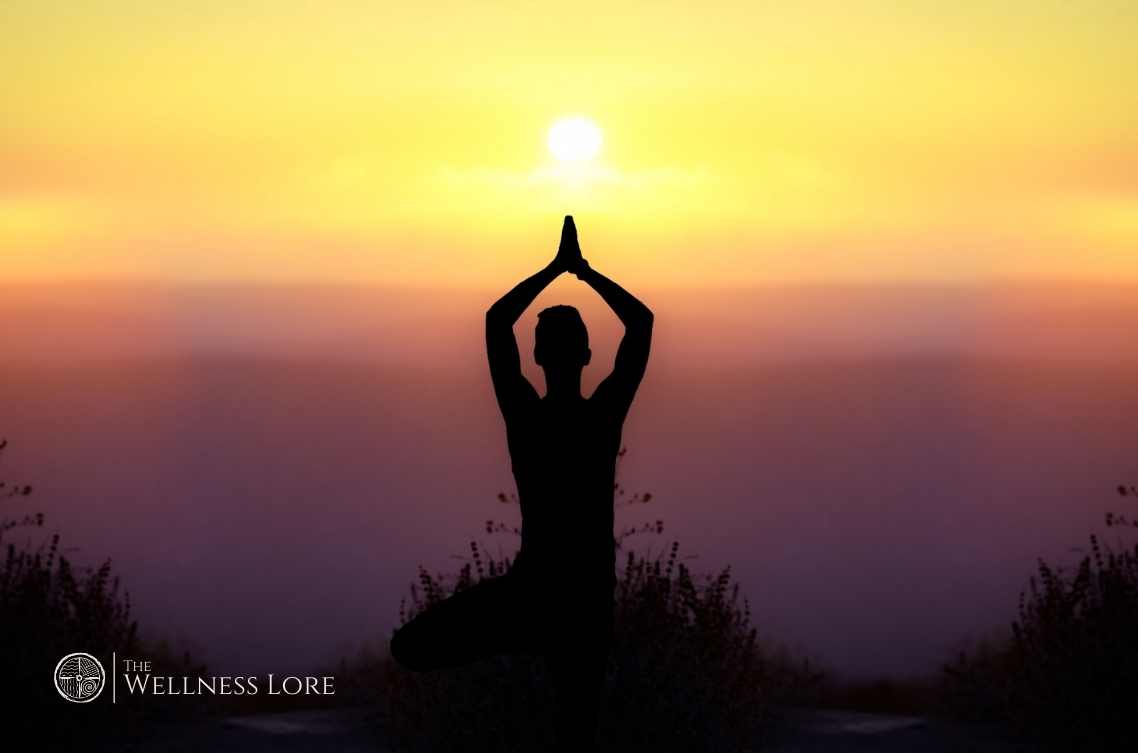Yoga

Yoga
One of the most popular wellness trends with a great buzz is yoga. According to research, the number of people who practice yoga increased by more than 50% by 2016. According to the study, one in three Americans said they were somewhat or very likely to practice yoga in the upcoming year. People who practice yoga are also more likely to engage in other forms of exercise, such as jogging or cycling. According to experts, it may have something to do with yoga’s mix of advantages for physical and mental health has motivated people to engage in this centuries-old ritual.
According to the Center for Integrative & Lifestyle Medicine at Cleveland Clinic in Ohio, the increased stress and fast-paced nature of today’s world make yoga more relevant than ever. We are constantly marking things off our to-do list while operating largely automatically. People can slow down with yoga, according to Sherwin.
Practicing yoga helps you to relax and break free. Yoga can be as simple as sitting and breathing and finding serenity because you are awake and present.
What does Yoga mean?
The word yoga is derived from the Sanskrit word meaning Union in the literal sense. Yoga can be defined as using the breath to bring the mind and the body together. People are now aware of the physical and mental advantages of yoga and view it as a form of lifestyle. As yoga is much more than postures it is truly an entire way of life.
Origin of Yoga
Yoga can be traced back to over 5,000 years ago. The Indus-Sarasvati culture in Northern India invented the earliest forms of yoga. The Rig Veda was one of the earliest sacred books where the word “yoga” first appears. The Brahmans and Rishis (mystic seers), documented their health practices and ideas in the Upanishads which is a massive compilation with more than 200 texts. This information gradually improved and enhanced yoga practices. The Bhagavad-Gîtâ, written approximately 500 B.C.E., is the most well-known scripture that talks about yogic practices. The Upanishads absorbed the Vedic concept of ritual sacrifice by instructing students to sacrifice their egos through self-awareness, a service called karma yoga, and wisdom called jnana yoga.
Traditional yoga
Yoga’s pre-classical era saw the assimilation of a variety of concepts, viewpoints, and practices. The first systematic representation of yoga by Sage Patanjali, the Yoga-Sûtras distinguishes the Classical era. This document was likely written in the second century and describes the way of RAJA YOGA, sometimes known as classical yoga. To achieve Samadhi or enlightenment, Patanjali categorized the practice of yoga into an eight-limbed route or progression. Yoga-Sûtras have a major impact on the majority of contemporary yoga systems. Due to this, Patanjali is regarded as the Father of yoga.
Post-classical yoga
After Patanjali’s time, a few centuries later, yoga teachers developed a set of techniques meant to revitalize the body and lengthen life. They disregarded the traditional Vedic doctrines and accepted the human body as the path to enlightenment. With radical methods to purify the body and mind and undo the bonds that bind us to our physical existence, they created Tantra Yoga. Hatha Yoga, which is how most people in the West currently conceptualize yoga, was developed as a result of the discovery of these physical-spiritual linkages and body-centered practices.
Modern-day yoga
Yoga gurus visited the West in the late 1800s and early 1900s, drawing interest and disciples. When Swami Vivekananda dazzled the audience in 1893 at the Parliament of Religions in Chicago with his talks on yoga and the commonality of the major religions, awareness increased. Hatha Yoga has vigorously popularised in India during the 1920s and 1930s thanks to the efforts of Hatha Yoga practitioners like T.Krishnamacharya, and Swami Sivananda. Krishnamacharya founded the first Hatha Yoga school in 1924 in Mysore. Sivananda established the Divine Life Society in 1936 near the banks of the river Ganga. Three of Krishnamacharya’s pupils—B.K.S. Iyengar, T.K.V. Desikachar, and Pattabhi Jois carry on his legacy, broadening the appeal of Hatha Yoga.
Fundamentals of Yoga
Yoga affects a person’s body, cognition, emotion, and energy levels in a positive way. Due to this factor, there are four main categories of yoga: Karma Yoga, where we use our bodies, Jnana Yoga, where we use our minds, Bhakti Yoga, where we use our emotions, and Kriya Yoga, where we use our energies. Each of the yoga systems we practice fits into one or more of these categories.
These four elements combine differently in every person. Each seeker needs a different combination of the four fundamental routes, and only a guru (teacher) may recommend it. Working under the guidance of a guru is crucial, as underlined in all ancient comments on yoga.
There are numerous traditional schools of yoga, which have developed due to various philosophies, traditions, lineages, and guru-shishya paramparas. There are many different types of yoga, such as Jnana Yoga, Bhakti Yoga, Karma Yoga, Patanjali Yoga, Kundalini Yoga, Hatha Yoga, Dhyana Yoga, Mantra Yoga, Laya Yoga, Raja Yoga, Jain Yoga, Buddha Yoga, and others. Every school has its methods and procedures for teaching yoga.
Yama, Niyama, asana, pranayama, pratyahara, dharna, dhyana, samadhi, bandhas and mudras, shatakarmas, yukthara, mantra-japa, yukta-karma, etc. are some of the often practiced yoga sadhanas. Yamas are limitations, while Niyamas are rituals. For more advanced Yogic techniques, these are regarded as prerequisites. Kuryat-tadasana-sthairyam asanas can create physical and mental stability, including adopting different psycho-physical body patterns and enabling one to hold a body position (a steady sense of one’s structural being) for an extended period.
Benefits of Yoga
Various people experience yoga’s advantages in different ways. Overall, yoga can support balance, stability, flexibility, and strength. According to research, it can also support certain aspects of health, including eating patterns, weight loss and maintenance, and cardiovascular health.
In a recent study, yoga practitioners saw improvements in several health indicators, such as stress, anxiety, body composition, blood pressure, inflammation, and metabolic markers among those with type 2 diabetes. A meta-analysis revealed that yoga practice lowered blood pressure in middle-aged persons with a body mass index (BMI) of 25 or above. When breathing exercises and meditation were incorporated into the yoga intervention, the advantages were numerous.
According to another study, yoga-inspired 40% of people to eat healthier and nearly two-thirds of people to increase their exercise. There is evidence that yoga may aid in managing pain and other symptoms as well as the general quality of life in those with certain health issues and chronic diseases.
- Yoga makes you more flexible, and that’s the main motivation for taking up yoga. The body’s flexibility can increase through yoga asanas. The asanas in yoga ensure safe stretching by letting the nervous system relax the muscles through powerful stretches. There is the least chance of ligament and tendon damage when doing yoga, which is not the case in other exercises. Muscles can open up more in your body by relaxing and letting go of whatever tension they may be holding.
- Yoga lowers stress levels in the body. People start practicing yoga to increase their flexibility, but they keep going back because of how much better it makes them feel. Yoga’s concentration, centering, and breathing techniques all work to lower stress levels, making it the perfect remedy for the current hectic lifestyle. It’s also because yoga helps people relax and release bodily tension while simultaneously having a good impact on activity levels and exercise. You can experience physical, mental, and energy relaxation and renewal after doing yoga.
- Yoga enables you to choose a better course of life. Yoga has a story about a pupil who asked their teacher if their smoking habit would affect their yoga practice. The instructor answered with a smile – No, but doing yoga will interfere with your smoking. Whether or not that was the case, one of the wonderful things about yoga is that it helps you tune into what your body needs. Many people discover that practicing self-acceptance and self-love on the yoga mat may have a dramatic impact on how they treat their bodies off the mat, whether that be through increased exercise levels. improved dietary choices or less dependence on alcohol or smoking.
- Our body’s natural healing process is supported by yoga. Given the right circumstances, the body has a remarkable capacity for self-healing. Yoga practice can be a great approach to fostering the conditions necessary for the body’s natural healing processes to take place. This is partly because mindfulness strengthens the immune system, improving the body’s capacity to fend off illness and recover from injury. The body can recover from physical injury with the support of yoga’s strengthening and lengthening effects, which also increase mobility and function. Additionally, the advantages for your mental health may result in better sleep habits and increased well-being, which would significantly raise your standard of living.
Practicing Yoga can help you get fit for life. One of the most important benefits of a yoga routine is not just physical but it’s the quieting of the mind. You learn to pay attention to your body mind and surroundings. Yoga can fine-tune your attention and as you get deeper into your practice over the years, you will begin to see the mental and spiritual benefits.
More Recent Stories



